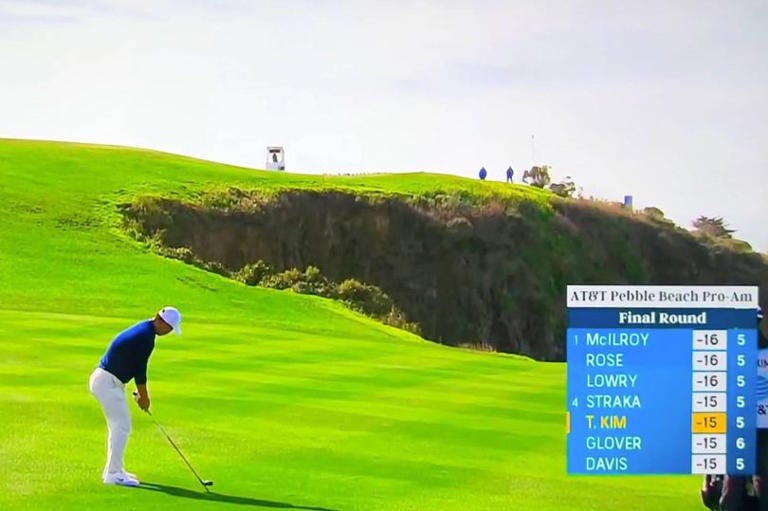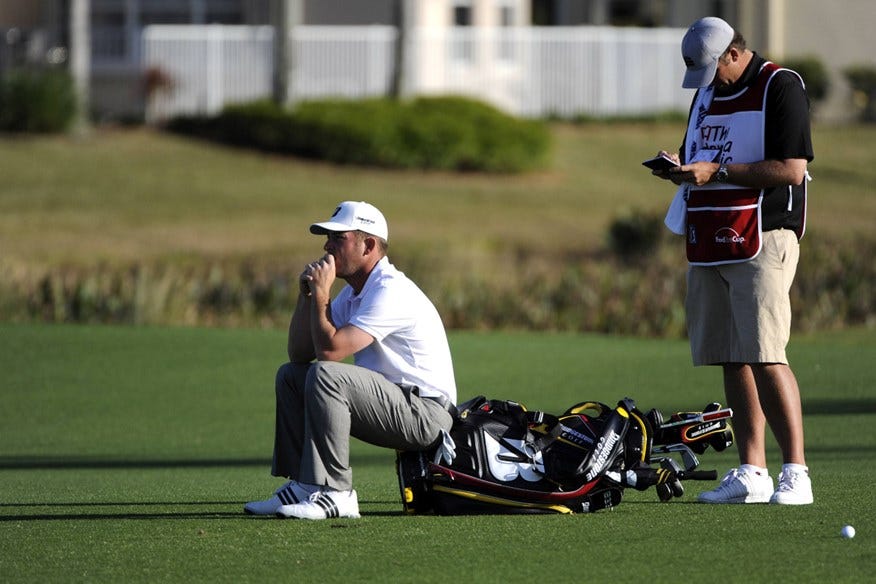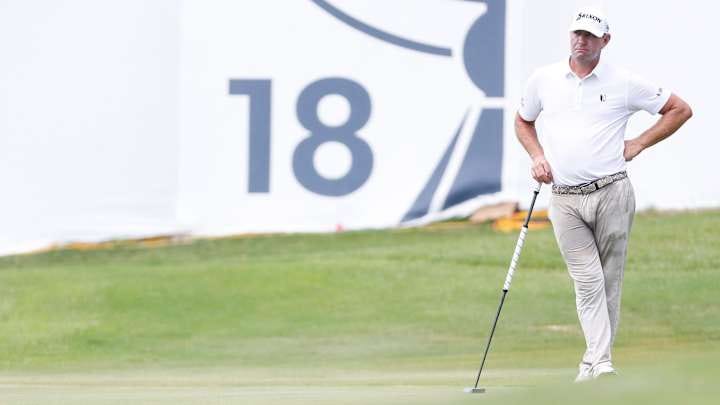Is the PGA Tour Poised to Tackle Slow Play?
Slow play has plagued the PGA Tour for decades, is 2025 the year the tour does something about it?
The PGA Tour has a problem, and it is one that has plagued the tour for decades now. Slow play, the ire of golfers everywhere, has been in the news this season as final rounds have been creeping close to six hours long. As other sports have found ways to speed up play and their product, it makes one wonder, is this the year that the PGA Tour finally does something about their pace-of-play issue?
The slow play debate took center stage last week at one of the cathedrals of golf, Pebble Beach. On the sixth hole, Tom Kim, always a lightning rod of sorts, was playing his second shot into the par 5 when one of the golf’s main pet peeves happened. After taking 40 seconds to address the ball and another 25 seconds to pull the trigger and swing, Kim flared his shot into the rocks right of the green and out of play.
Recreational golfers everywhere see this happen all the time. Someone waits forever for a green to clear and then tops it, shanks it, or doesn’t even come close to the green, slowing up play behind them. This was different, this was the 23rd ranked golfer in the world doing something similar. Frank Nobilo was quick to chime in on the television broadcast, saying the shot was “not worth the wait.”
Slow play on tour may have finally hit a tipping point as other players have been talking about the need for faster play, something observers on social media have been debating about for years.
Last June, the PGA Tour launched its Fan Forward program and not surprisingly, survey results from fans said loud and clear, the PGA Tour has a pace-of-play problem. At Pebble Beach, the tour held a press conference where they stated “everything is on the table” with regards to slow play.
The PGA Tour has maintained that the average time for a player to hit a shot has not significantly increased in recent years, but the outcry from fans and media for a faster pace-of-play on the PGA Tour has never been louder. Dottie Pepper pointed out on the CBS broadcast of the Farmers Insurance Open at Torrey Pines that it was a respect issue. She stated, “I think we’re starting to need a new word to talk about this pace-of-play issue, and it’s ‘respect’ - for your fellow competitors, for the fans, for broadcasts, for all of it. It’s just got to get better.”
At Pebble Beach, the tour did lay out their proposed initiatives to help speed up play, they are:
Testing the use of distance measuring devices (range finders) by both players and caddies during tournament play. Gary Young, senior vice president of rules and competitions said that they will be testing these devices out this season at events of various field sizes.
Publicizing pace-of-play data for players using “average stroke time,” which is the average amount of time it takes a player to take a stroke using Shotlink data.
Disclosing fines and penalties for players who violate slow-play rules in order to satiate fan feedback for more transparency, as well as players who have called for more slow play accountability.
Using the PGA Tour’s new video review center to make calls on rulings quicker and more efficiently.
Time will tell if the PGA Tour will follow through on any of this, but the PGA Tour’s chief competitions officer Tyler Dennis said this week, “I think there is a real movement for all of this to be looked at. I think change is in the air.”
Lucas Glover, PGA Tour veteran and U.S. Open champion has been very outspoken recently about the slow pace on the PGA Tour. While on a flight, he jotted down some of the ways he thinks the PGA Tour can speed up play. He talked about it on his, Lucas Glover Show on SiriusXM PGA Tour Radio. Below is Glover’s list to speed up play:
Course markings: “Every sprinkler head should be marked, not by a Tour caddie that’s walking the course on Monday. This should be up to the Tour or the tournament, so that a caddie that gets in a weird spot or a player that gets in a weird spot isn’t hunting for yardage. That takes time.”
Distance-measuring devices: “They can only help. Not everyone will use them all the time, but it sure would help given the option.”
Bunker rakers: “Every group needs a raker. Just like the Open Championship. Have someone in each group rake the bunkers. Proper caddies take a lot of time and do an unbelievable job, as they should and as they need to, but it can cause backups.”
No honorary observers: “Tour’s not going to like this, but honorary observers can go. Honorary observers are a couple people that the Tour puts in a group to walk inside the ropes. They probably work for the sponsor or are a guest of the sponsor. Guess what? they get in the way. They don’t know where to walk to walk off the greens, they don’t know where to stand. A lot of times the group behind is waiting on them.”
Scrap sign bearers: “Everybody’s got a phone, everybody has leaderboard access… you don’t need sign bearers anymore. The feature is nice and it gives kids a cool experience, but they get in the way because they don’t know where to walk. They stand in the fairway and the group behind has to wait for them to walk ahead - give those same kids a tutorial on raking and let them be the rakers. Still have the kids there.”
Ban Aim Point: “Statistically it hasn’t helped anybody make more putts since its inception on the PGA Tour. Statistics have borne that out. It’s also kind of rude to be up near the hole, stomping around figuring out where the break is in your feet. It needs to be banned. It takes forever.”
Eliminate Golf Carts: “There are way too many golf carts on the golf course during play. Easily, the number one reason players back off golf shots is because a golf cart is going by or a golf cart stopping. And usually, it’s for a good reason, they’re bringing water to put in coolers or they’re shuttling people. But there has got to be a way to eliminate some of the carts… it is the number one reason a golf pro will back off a shot is a golf cart on the PGA Tour, I would almost guarantee it.”
Drop Circles: “Every obstruction should have a simple drop circle. If you’re up against an obstruction or it is in the way, drop in the nearest designated area.”
Tour veteran Charlie Hoffman also chimed in this week in a letter to tour players. “We’ve taken a lot of heat over the past few weeks about slow play. And yeah, it’s an issue - for our fans, for us as players - cutting down field sizes will help, but only by a few minutes a day,” Hoffman said. “As players, we still need to make a concerted effort to speed up. Pace of play has been a challenge my entire 20 years on tour, and it was an issue 20 years before that.”
In reality, the tour will continue to have this problem until they take Brooks Koepka’s advice and “just start stroking guys.” Fines are not the solution for the PGA Tour on this one, but adding strokes to their score could be. We will find out sometime in 2025 what kind of solution the tour has for this prolonged issue.










Did anyone notice all the chemtrails in the sky on the coverage today? It was so obvious in all the camera shots but “nothing to see here.”
It's amazing to me that this is a solved problem at the state level (amateur championships and opens) and the PGA refuses to acknowledge that solution (and it's simplicity) - strict pace of play rules with penalty strokes for slow groups